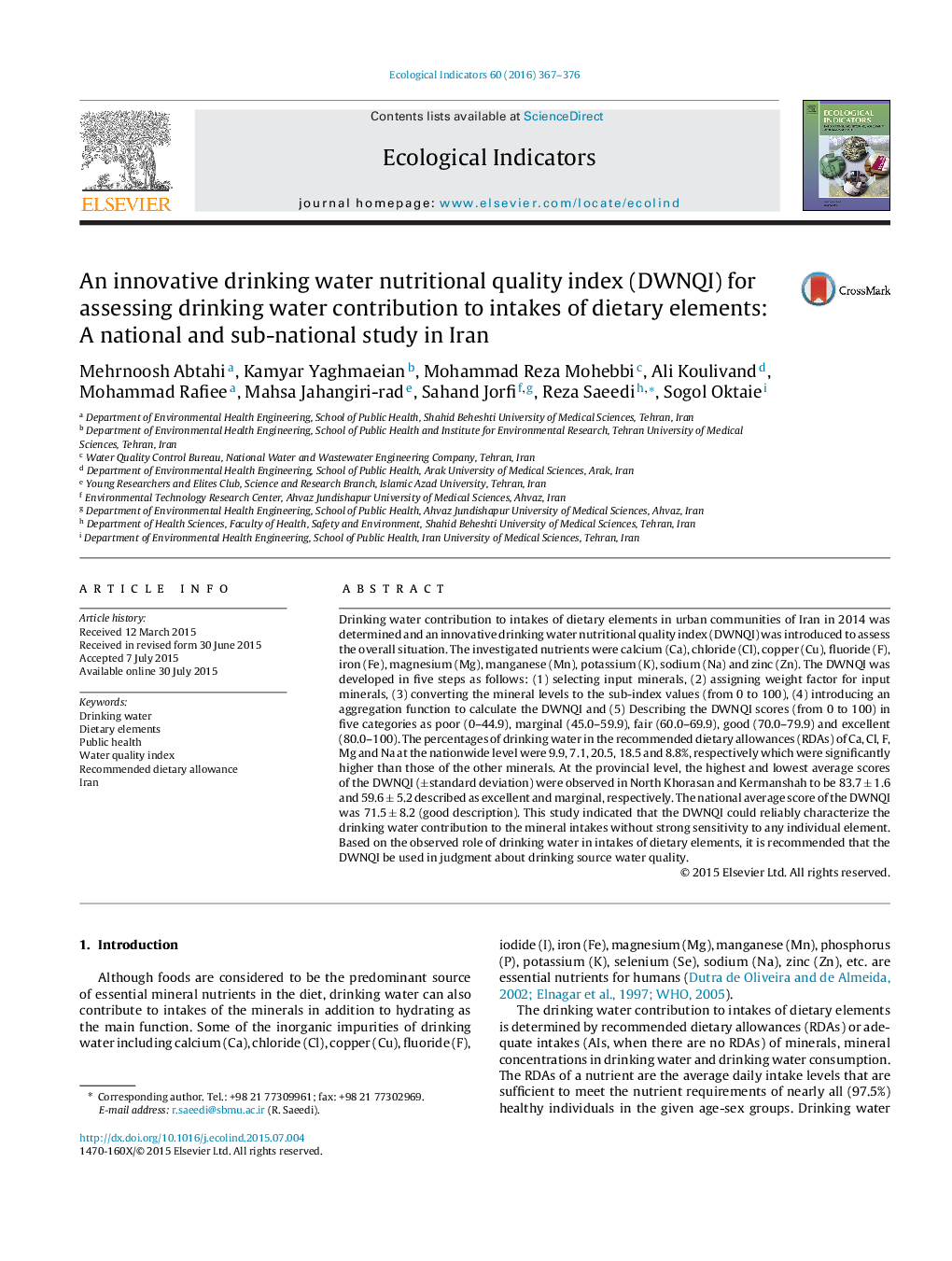| Article ID | Journal | Published Year | Pages | File Type |
|---|---|---|---|---|
| 6294055 | Ecological Indicators | 2016 | 10 Pages |
â¢Drinking water contribution to intakes of mineral nutrients in Iran was determined.â¢The proportion of drinking water in the RDAs of minerals was variable between the age groups.â¢An innovative DWNQI was introduced to assess intakes of minerals through drinking water.â¢The national average score of the DWNQI was 72 ± 8 (good designation).
Drinking water contribution to intakes of dietary elements in urban communities of Iran in 2014 was determined and an innovative drinking water nutritional quality index (DWNQI) was introduced to assess the overall situation. The investigated nutrients were calcium (Ca), chloride (Cl), copper (Cu), fluoride (F), iron (Fe), magnesium (Mg), manganese (Mn), potassium (K), sodium (Na) and zinc (Zn). The DWNQI was developed in five steps as follows: (1) selecting input minerals, (2) assigning weight factor for input minerals, (3) converting the mineral levels to the sub-index values (from 0 to 100), (4) introducing an aggregation function to calculate the DWNQI and (5) Describing the DWNQI scores (from 0 to 100) in five categories as poor (0-44.9), marginal (45.0-59.9), fair (60.0-69.9), good (70.0-79.9) and excellent (80.0-100). The percentages of drinking water in the recommended dietary allowances (RDAs) of Ca, Cl, F, Mg and Na at the nationwide level were 9.9, 7.1, 20.5, 18.5 and 8.8%, respectively which were significantly higher than those of the other minerals. At the provincial level, the highest and lowest average scores of the DWNQI (±standard deviation) were observed in North Khorasan and Kermanshah to be 83.7 ± 1.6 and 59.6 ± 5.2 described as excellent and marginal, respectively. The national average score of the DWNQI was 71.5 ± 8.2 (good description). This study indicated that the DWNQI could reliably characterize the drinking water contribution to the mineral intakes without strong sensitivity to any individual element. Based on the observed role of drinking water in intakes of dietary elements, it is recommended that the DWNQI be used in judgment about drinking source water quality.
Graphical abstractDownload high-res image (224KB)Download full-size image
